Paul Pope’s art show at the Philippe Labaune Gallery in New York City may be drawing to a close, but his visionary impact on worldbuilding and storytelling continues unabated. First published over 30 years ago, the prophetic THB is experiencing a timely resurgence in light of recent political developments. Later this year, 23rd Street—First Second’s adult imprint—will release a compilation volume, bringing renewed attention to Pope’s genre-defying work. In the meantime, fans can still explore his creations at the gallery, where Pope and Philippe Labaune recently spoke with The Beat about the exhibit, PULPHOPE 2, and the creative inspiration that Pope draws from jazz music, Moebius, and Jack Kirby.
Nancy Powell: Congratulations on the exhibit!
Paul Pope: Thank you. It was really great to see so many people at the opening.
Powell: Philippe, how did you come across Paul’s works, and what about the art and storytelling drew you to it?
Philippe Labaune: I first encountered Paul Pope’s work through THB, after hearing about the manga influences in his style—which piqued my curiosity right away. But what really stayed with me wasn’t just the energy or the bold brushwork, it was how deeply layered the storytelling felt. Paul isn’t simply pulling from manga or American comics—there’s a sophisticated combination happening in his work. From THB, I moved on to Batman: Year 100, and that’s when I truly understood the breadth of his visual language.
There’s this great tension in his pages: the elegance of European bandes dessinées, the shadowy mood of German expressionism, and this raw, almost anarchic energy that feels at once punk and deeply classical. His work speaks to the full history of comics, but it’s never nostalgic—it’s pushing the form forward. That’s what drew me in, and that’s why I felt he had to be part of the gallery’s program.
Powell: Can you talk about the process on how you and Paul selected the pieces that would appear in the exhibit?
Labaune: The timing of this exhibition aligned perfectly with the release of Pulp Hope 2, which really became the anchor for our curatorial process. The book is a window into Paul’s world, his evolution, and his range. Using it as our framework, we worked closely with Paul to shape a kind of condensed retrospective: something that could reflect the breadth of his career while still feeling intimate and focused.
We wanted to represent the key milestones—THB, Heavy Liquid, Batman: Year 100, Battling Boy—but also to carve out space for the more experimental, deeply personal works that show the full spectrum of his voice. Paul’s work defies easy categorization, which makes selection both exciting and challenging. Presenting it in a gallery context offers something that the printed page can’t—you can see the physicality of the ink, the corrections, the brushwork, the sheer intensity of the process. That closeness adds a whole new layer of appreciation for what he does as both a storyteller and an artist.
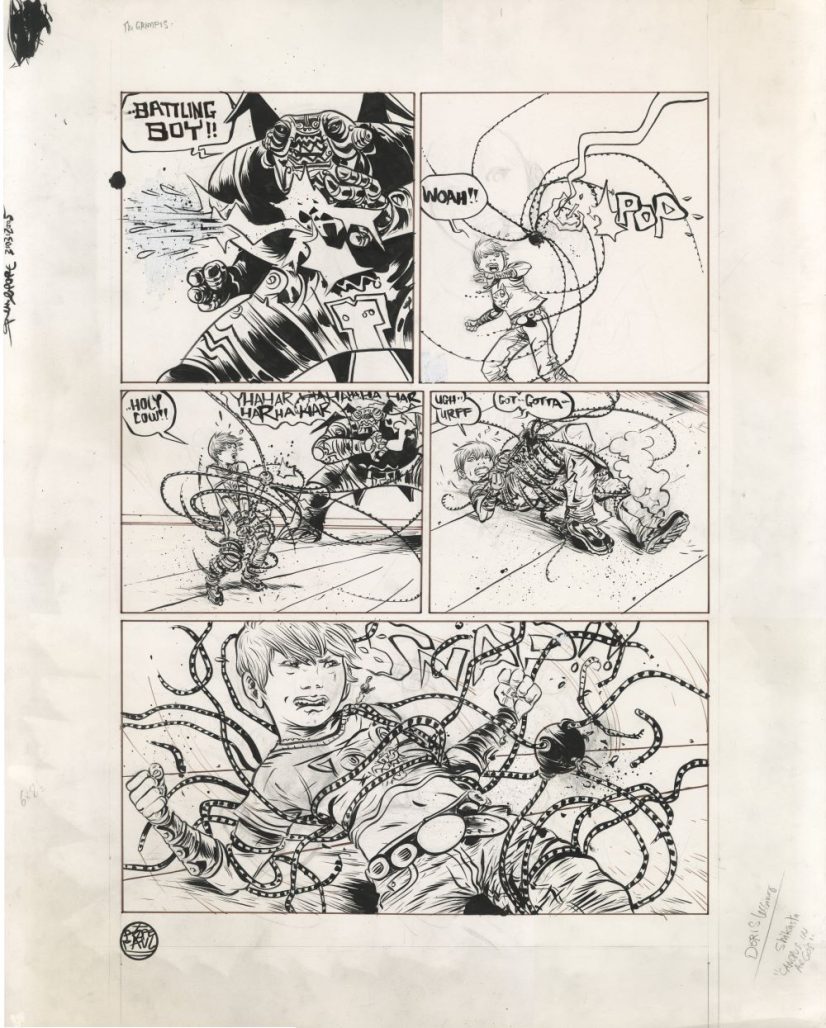 Battling Boy artwork by Paul Pope. Courtesy of Superfan Promotions, LLC.
Battling Boy artwork by Paul Pope. Courtesy of Superfan Promotions, LLC.Powell: Paul, you talk about the process of retracing the lines of childhood drawings to rediscover the process and thoughts that went into them in the preface to PulpHope 2. Have you had a similar journey of rediscovery as you considered the pieces chosen?
Pope: For the exhibition, we wanted to select a combination of pieces which are very recognizable (art from Batman: Year 100 and THB, for example), as well as some unseen or new pieces. The most recent piece is a large tribute I did to Moebius’ iconic character Arzack, which I did maybe 2 months ago. So it’s art stretching a 30 year timeframe, as hard to believe as that is.
Powell: As I leafed through PulpHope 2, I couldn’t help but think about the timeless and prophetic overtones of the stories, particularly with excerpts from THB. And in one of the interviews, you talk about being able to anticipate where we’re going as a culture. What is going through your mind now as you think about THB in the context of history?
Pope: I approached THB at first as a sort of tongue-in-cheek Steampunk/Victorian fantasy, but as I did more serious reading about machine intelligence, surveillance, and robotics, I started taking science fiction much more seriously. A lot of the references for the THB universe are based on science writers and thinkers as well as classic science fiction authors. It’s exciting that THB is finally being collected in a multi-book series (TOTAL THB from 23rd Street Books). A lot of people have either only heard about THB or managed to collect a couple random issues over the years. So people will be able to visit or revisit the world of THB for the first time. These remastered pages are all rescanned from the original art. I kept all of the THB pages, so we have the original source document to work with while preparing the series.
Powell: European art and manga have influenced your approach to art and storytelling. Who inspires you today?
Pope: I definitely still look at those. I also get a lot of inspiration from music, Alice Coletrane and Miles Davis from the jazz world, lots of ambient composers such as Harold Budd and Brian Eno. I’m always actively seeking out new artwork or artists I haven’t heard of or never got into before. And of course, a steady diet of Moebius and Kirby.
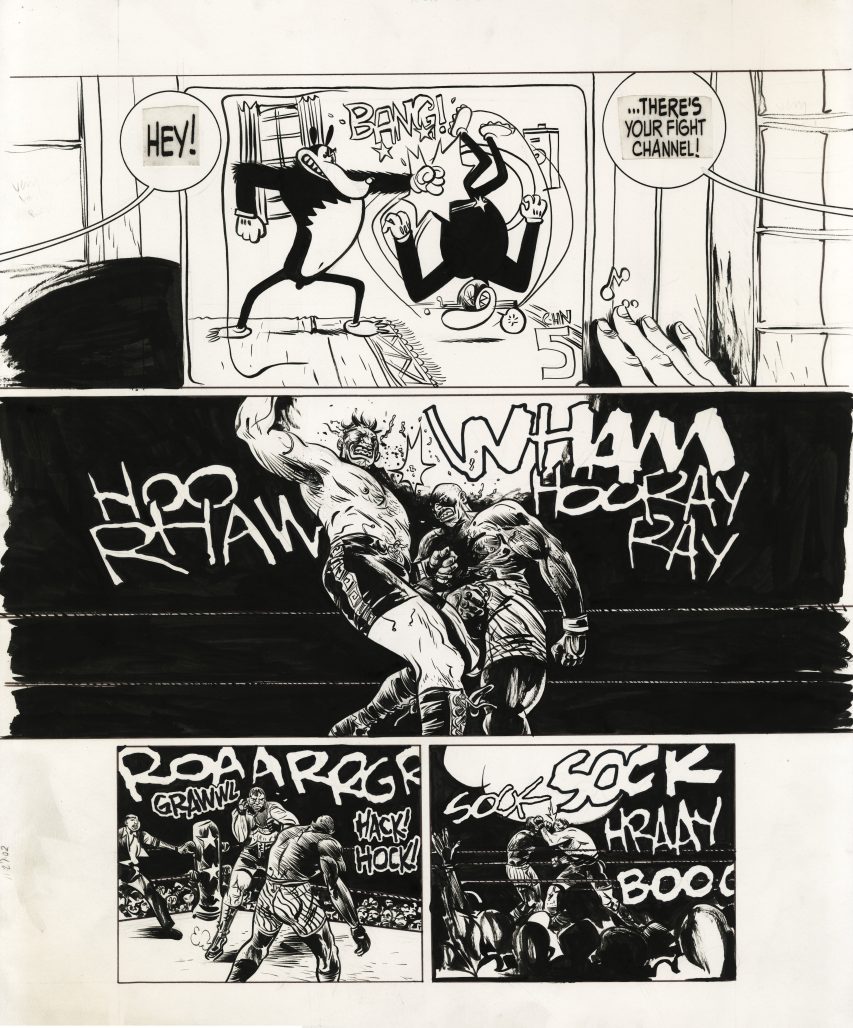 Art by Paul Pope. Courtesy of Superfan Promotions, LLC.
Art by Paul Pope. Courtesy of Superfan Promotions, LLC.Powell: Paul and Philippe, what are the pieces that visitors should consider and that hold a dear place in your heart?
Labaune: It’s always difficult to single out favorites. Each piece marks a different moment in Paul’s journey, and they all carry their own weight and resonance. That said, a few works do hold a particularly personal place for me.
The Lone Wolf piece stands out—it’s exquisitely composed, with this commanding central presence and a quiet intensity that draws you in. The line work has that signature Paul Pope tension: expressive, fluid, and deliberate. It embodies so much of what makes his work unique—there’s the grit and boldness of American comics, but also a clear echo of European elegance and restraint. It’s a perfect distillation of Paul’s ability to fuse mood, narrative, and pure draftsmanship into something amazing.
Pope: For me, it might be the THB “Lipstick” page, which I feel is a very good self-contained statement in the comics medium. That and the THB page called “Good Morning,” which is universally loved. It’s a page designed to make you smile.
 Spider-man artwork by Paul Pope. Courtesy of Superfan Promotions, LLC.
Spider-man artwork by Paul Pope. Courtesy of Superfan Promotions, LLC.Powell: And Paul, where do you go now as an artist? Any new projects or upcoming collaborations you’d like to share with The Beat?
Pope: I have a number of new projects in the works, between film, screenprinting, and comics. My art rep Felix Lu and I will open a new commission list later this year. Finishing Battling Boy and my French book about dream analysis, called Psychenaut, are my main projects in comics, currently. I love making comics and have a lot of new story ideas and some scripts I can’t wait to jump into after my current projects are finished.










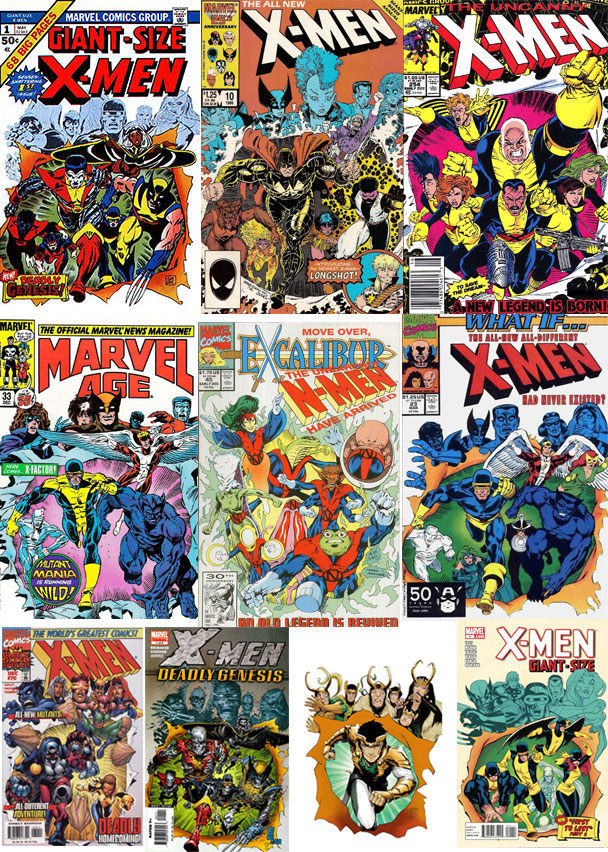







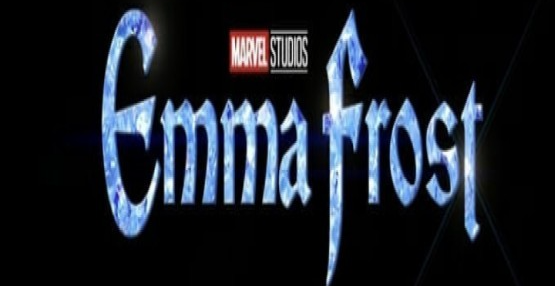
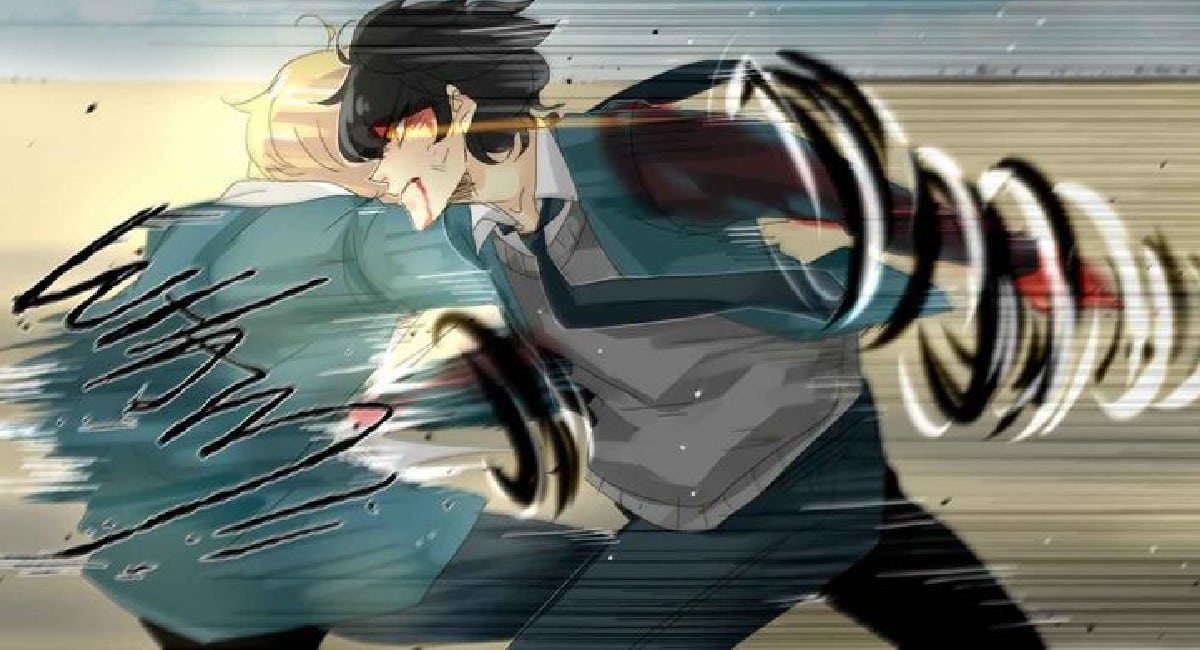
 English (US) ·
English (US) ·